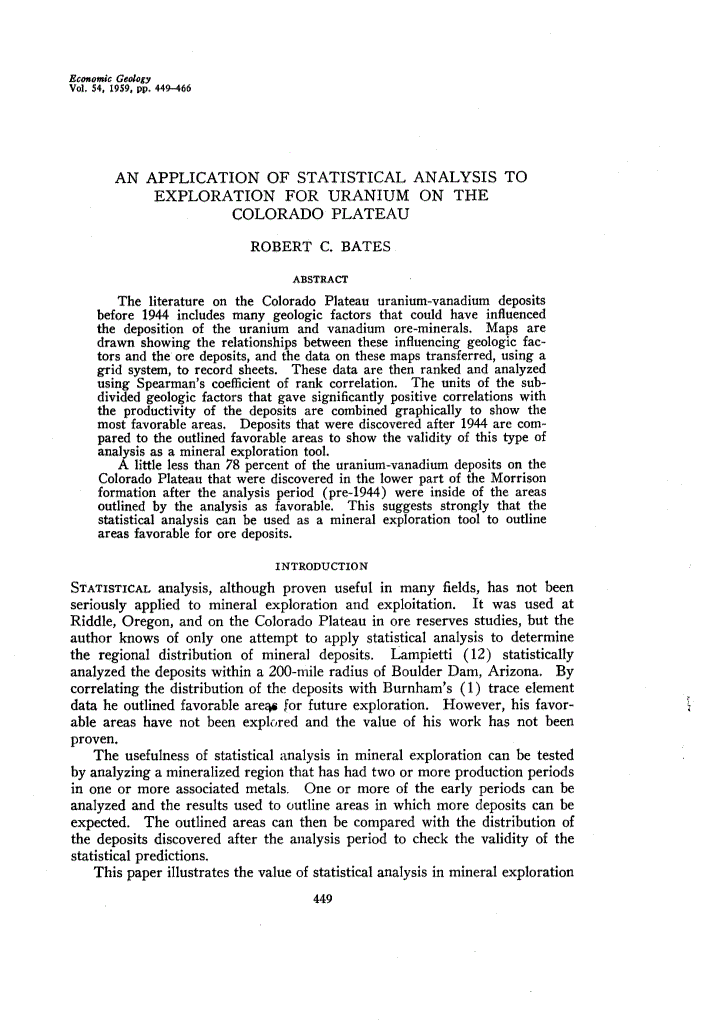Abstract
The literature on the Colorado Plateau U-V deposits before 1944 includes many geologic factors that could have influenced the deposition of the U and V ore-minerals. Maps are drawn showing the relationships between these influencing geologic factors and the ore deposits, and the data on these maps transferred, using a grid system, to record sheets. These data are then ranked and analyzed using Spearman's coefficient of rank correlation. The units of the subdivided geologic factors that gave significantly positive correlations with the productivity of the deposits are combined graphically to show the most favorable areas. Deposits that were discovered after 1944 are compared to the outlined favorable areas to show the validity of this type of analysis as a mineral exploration tool. A little less than 78% of the U-V deposits on the Colorado Plateau that were discovered in the lower part of the Morrison formation after the analysis period (pre-1944) were inside of the areas outlined by the analysis as favorable. This suggests strongly that the statistical analysis can be used as a mineral exploration tool to outline areas favorable for ore deposits.





